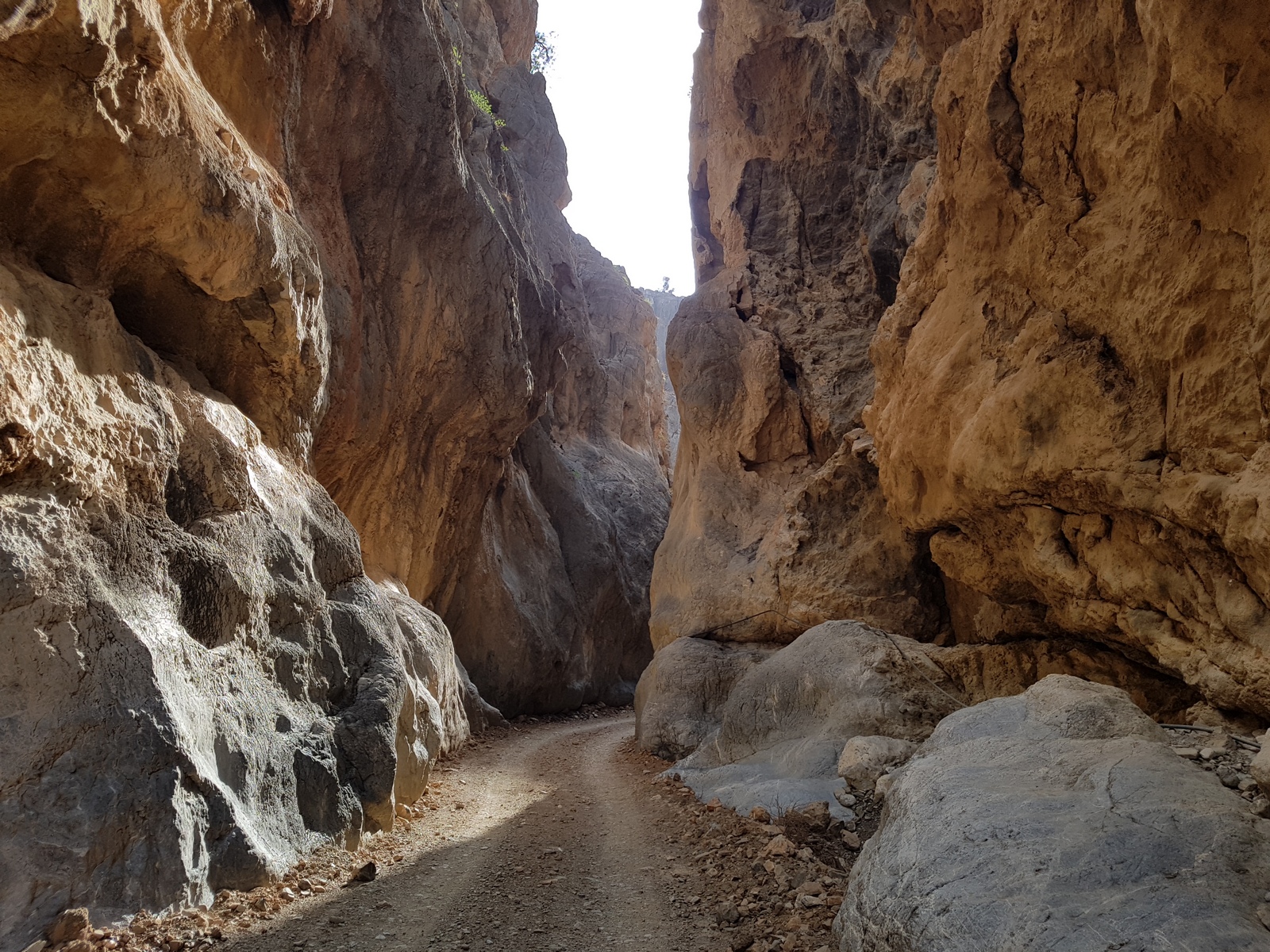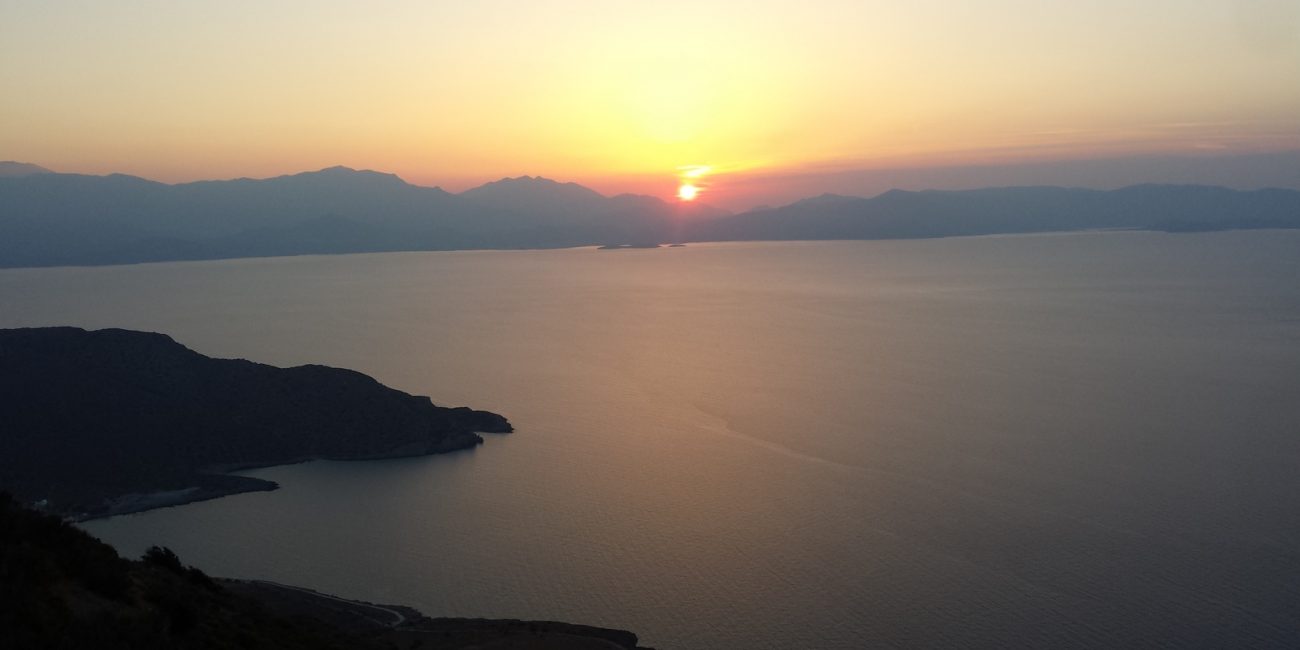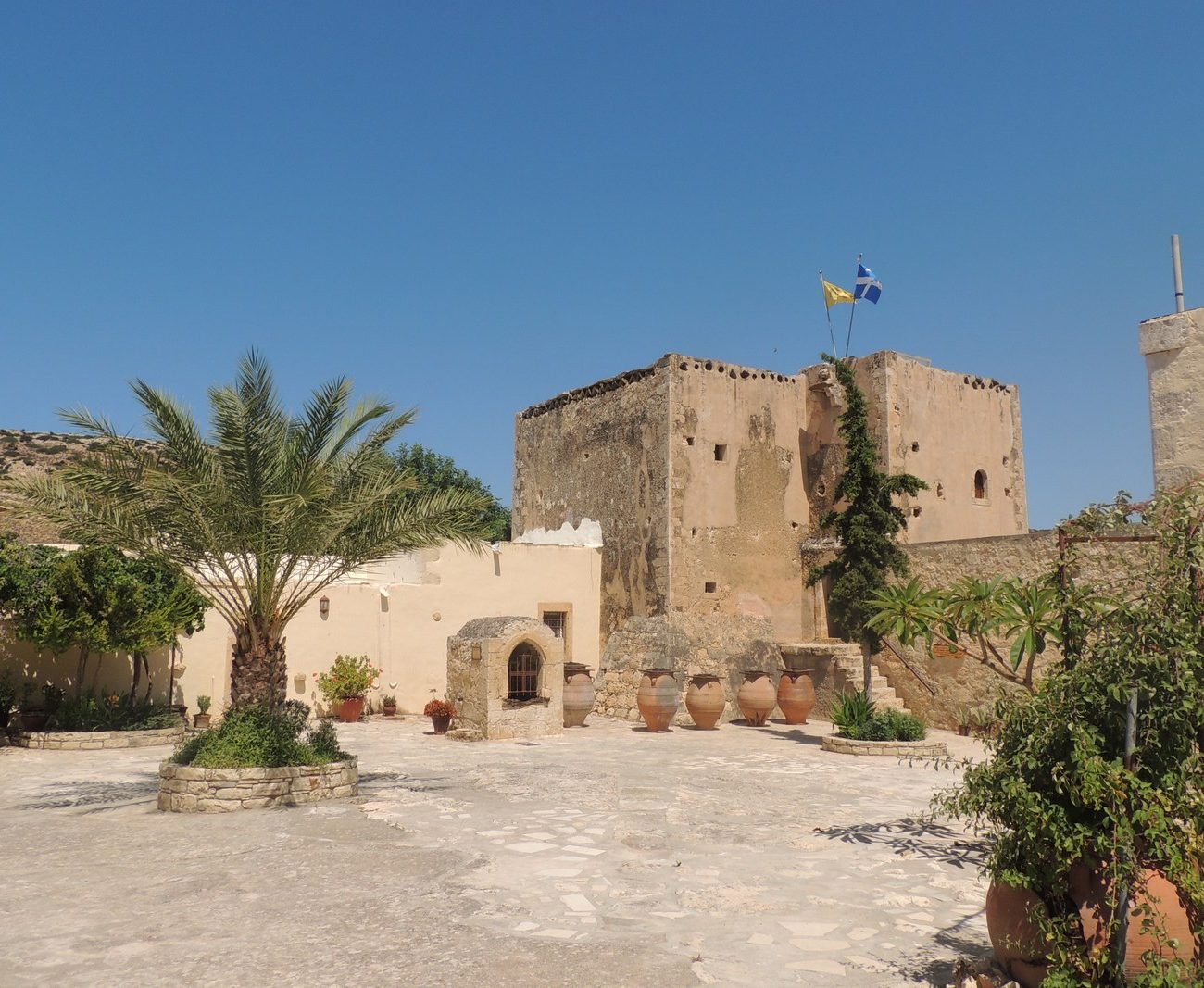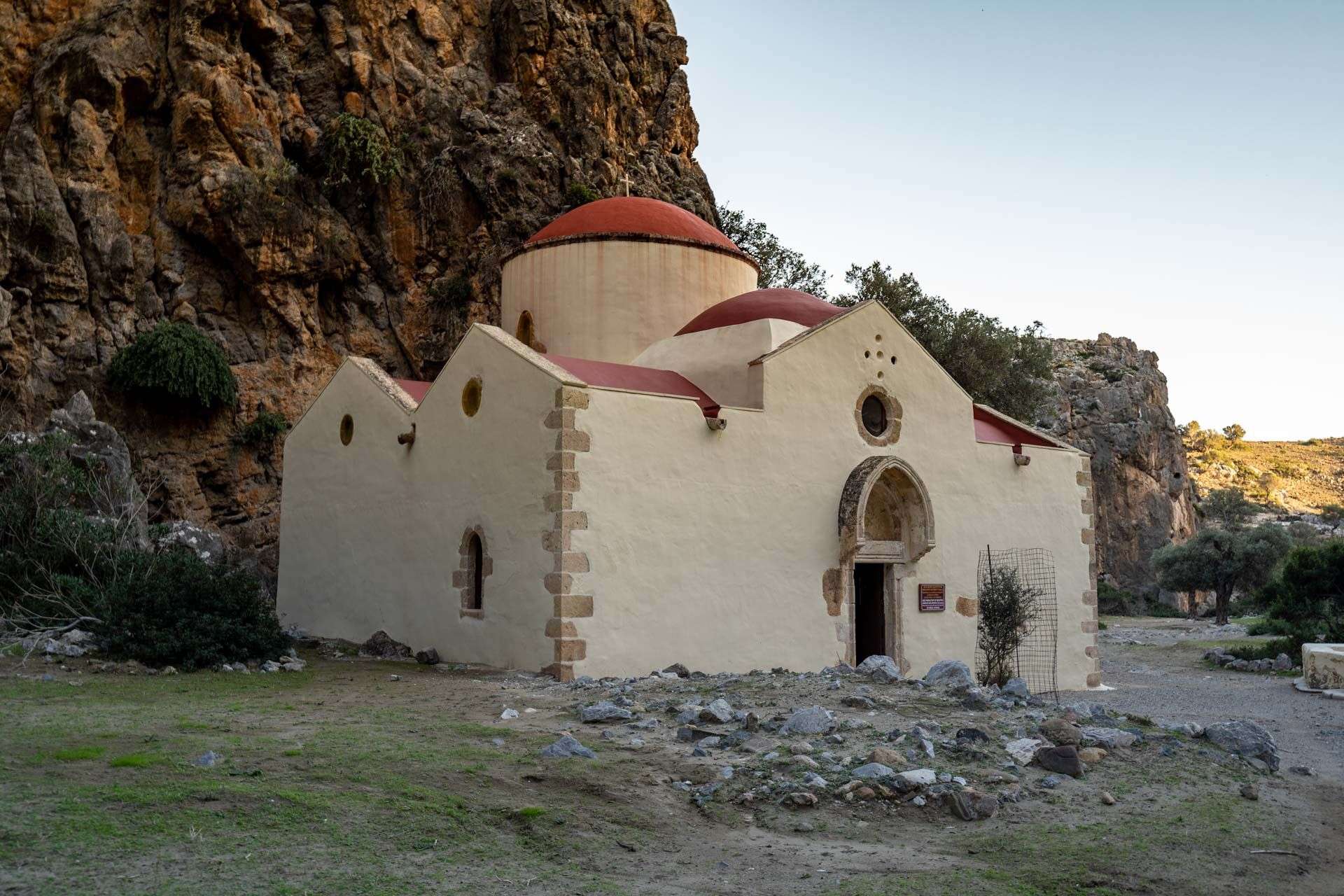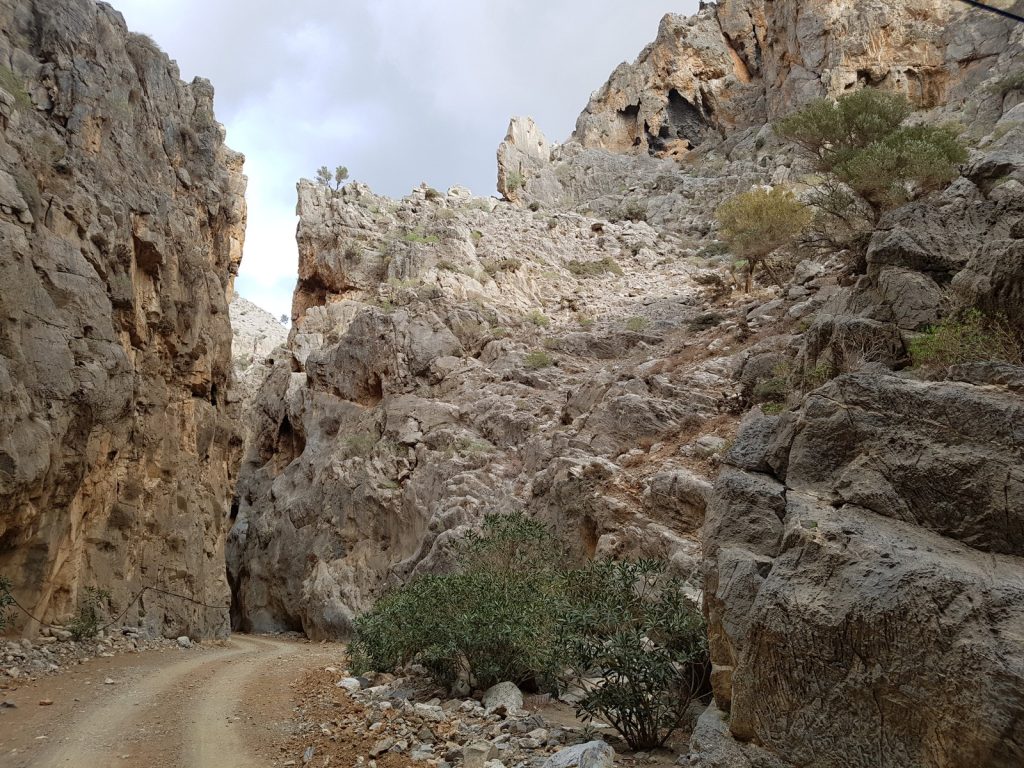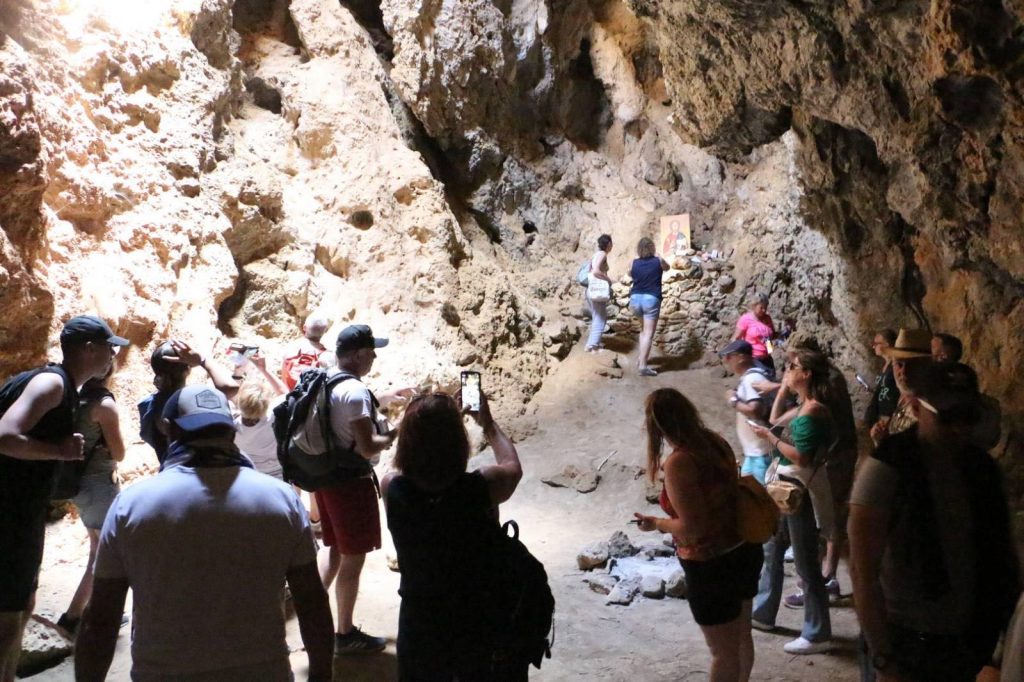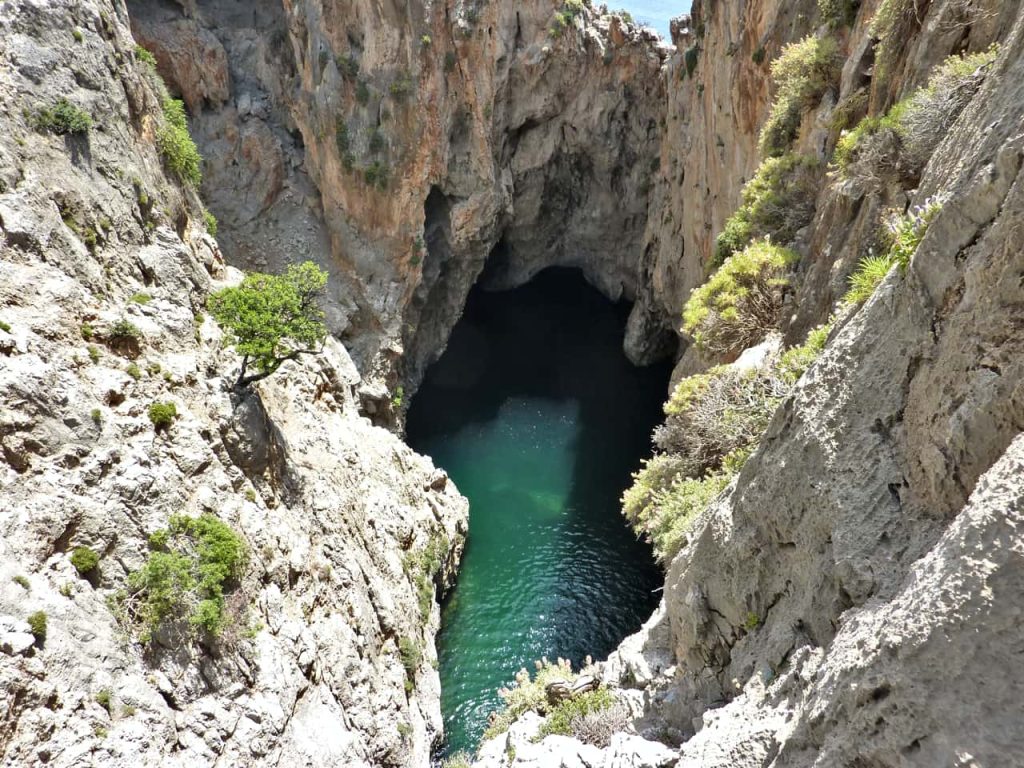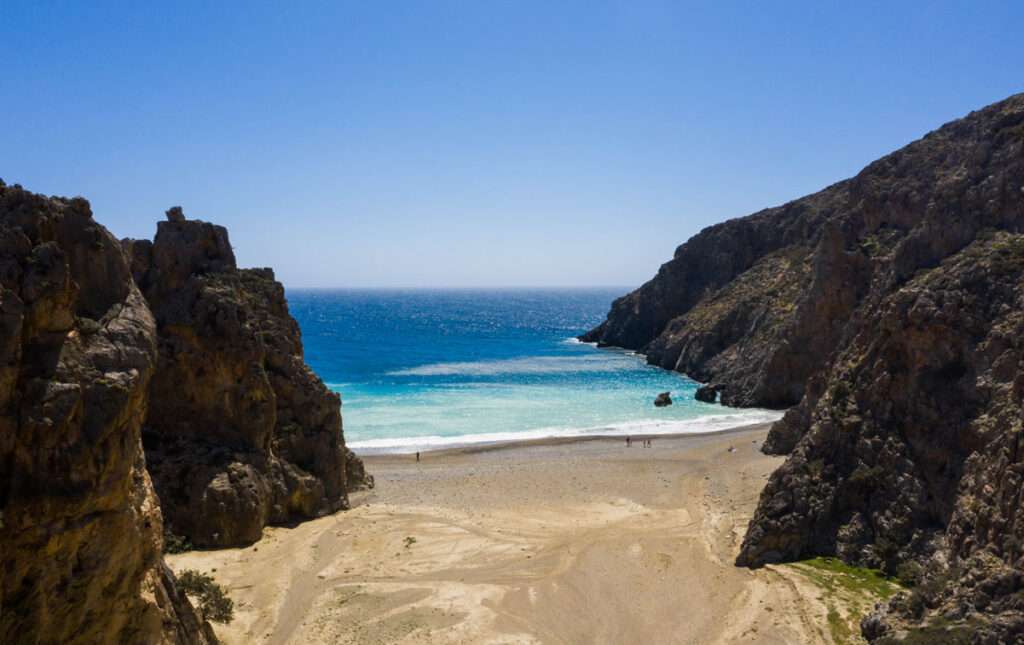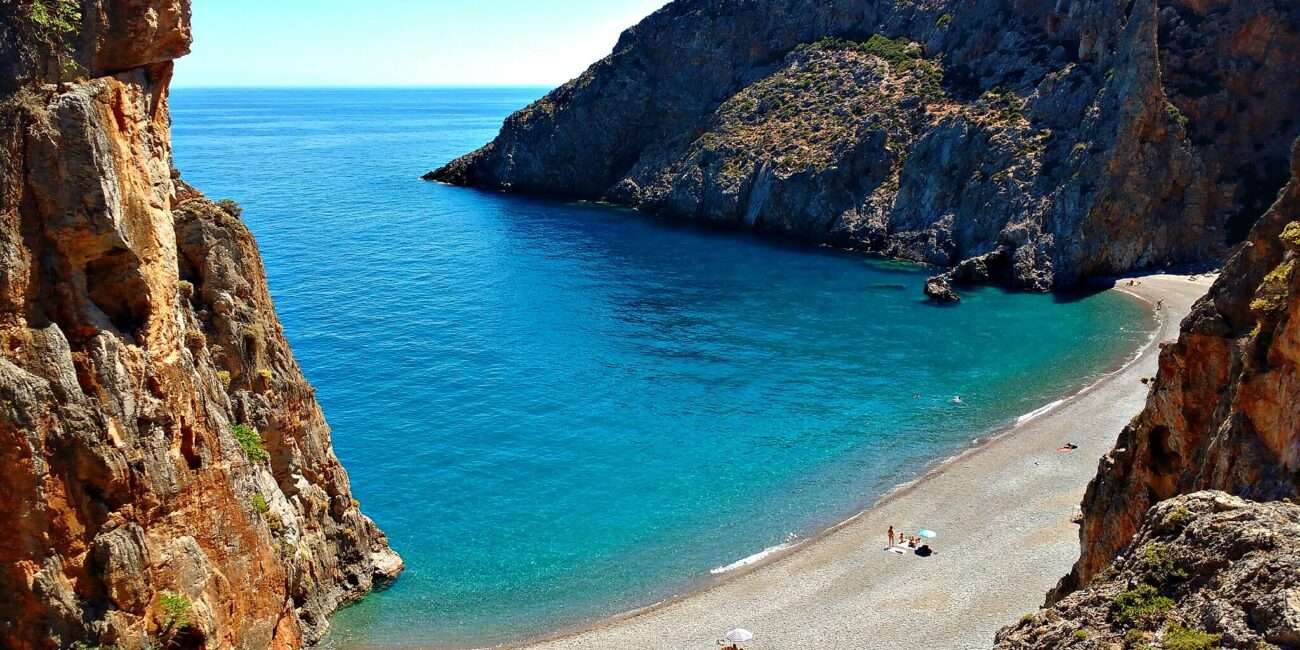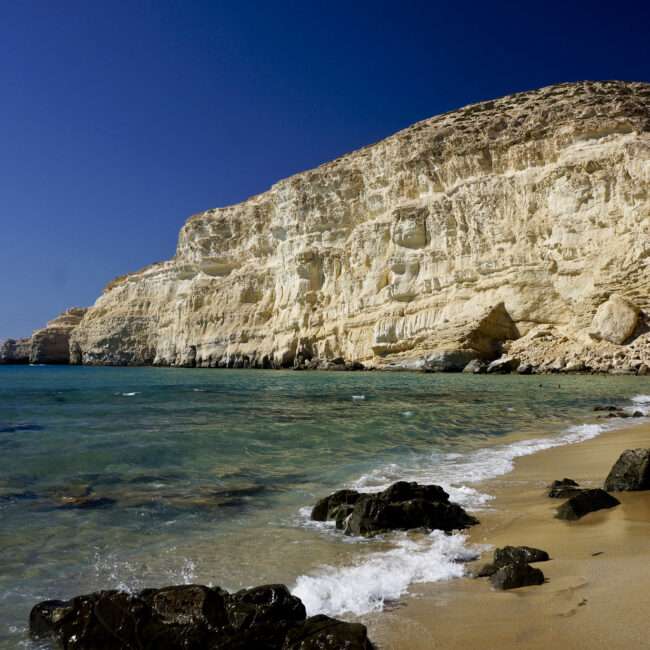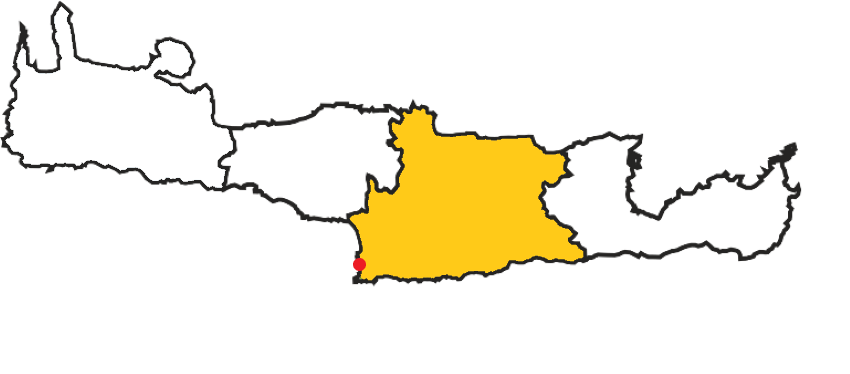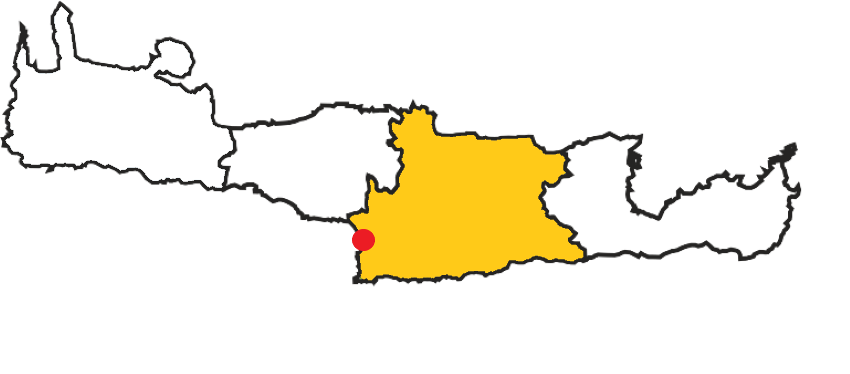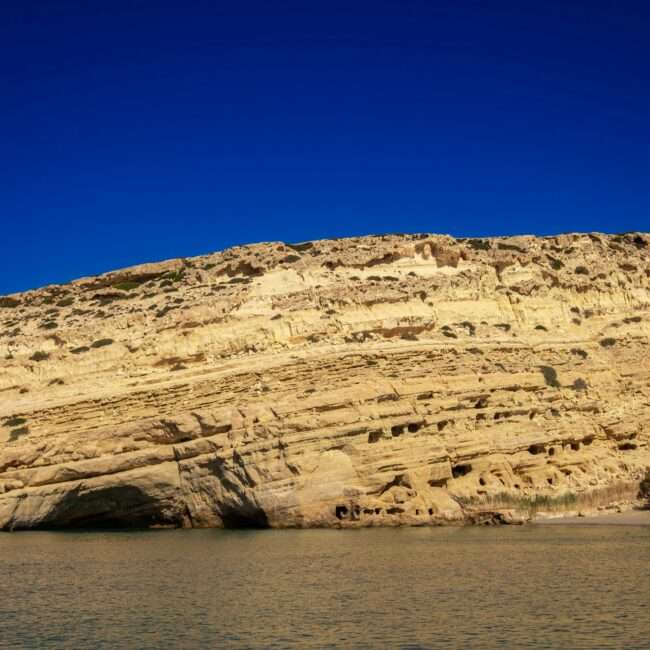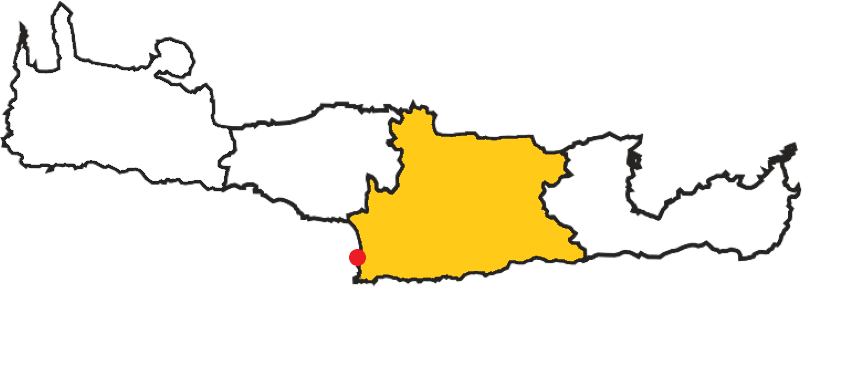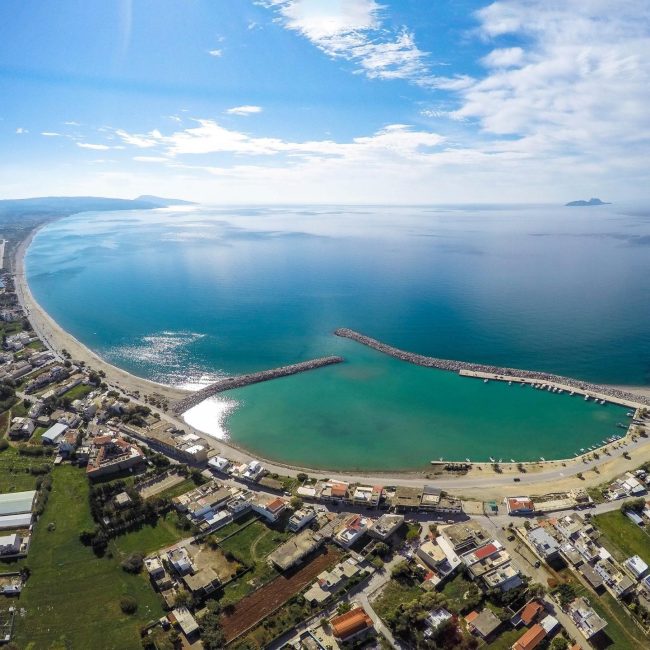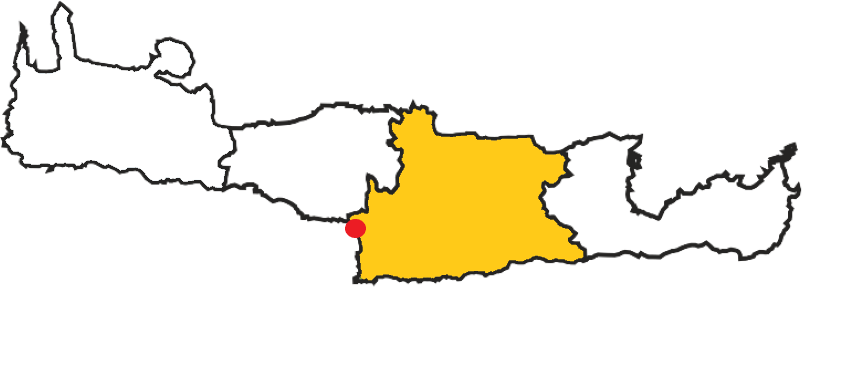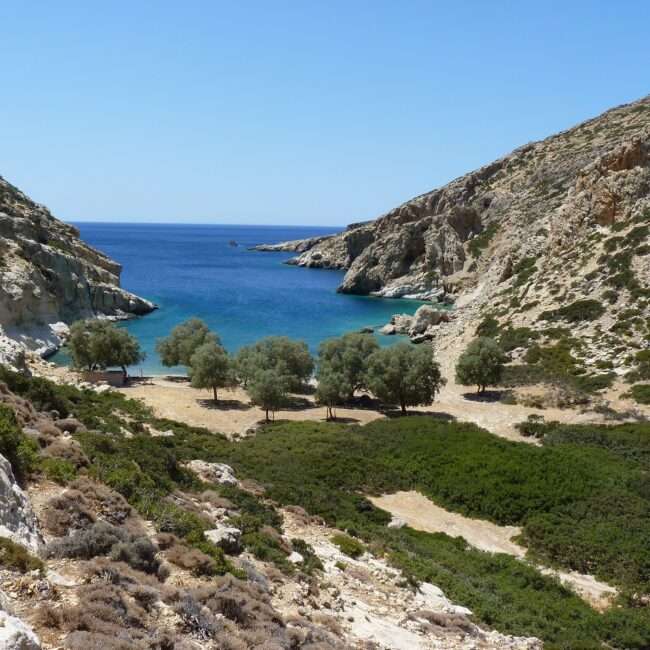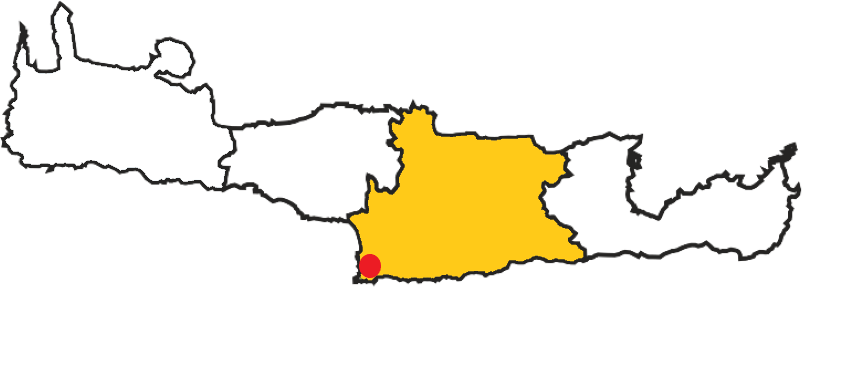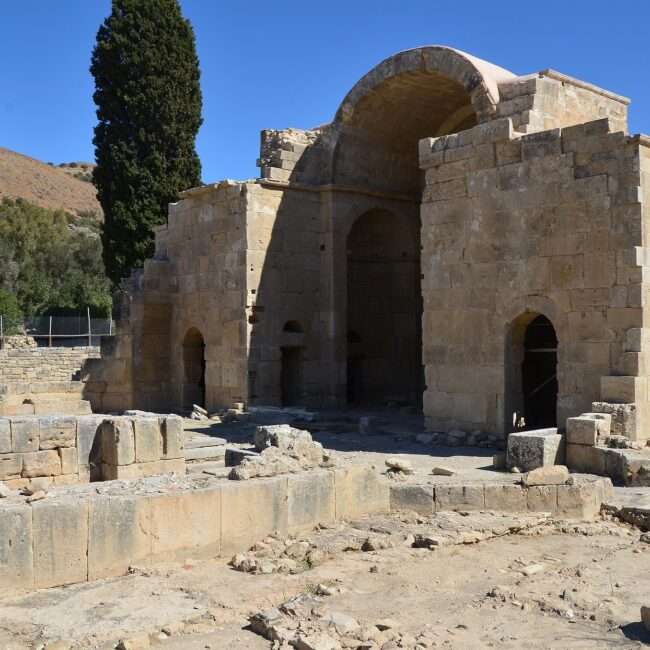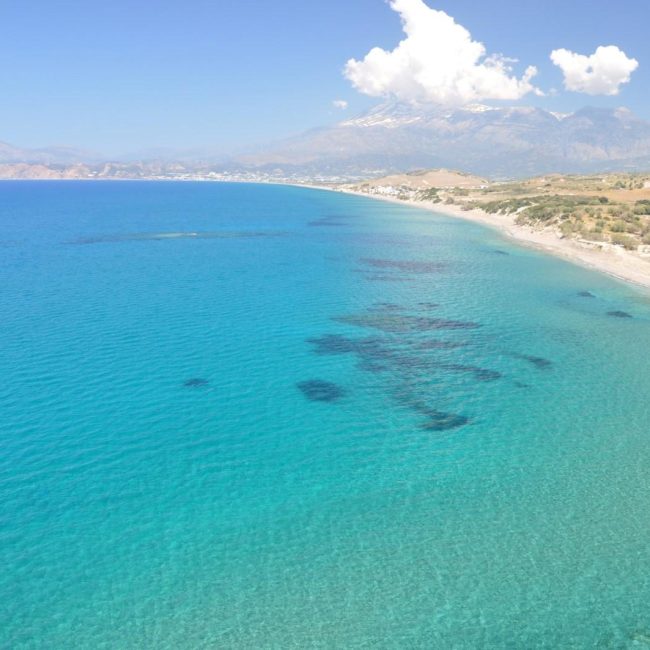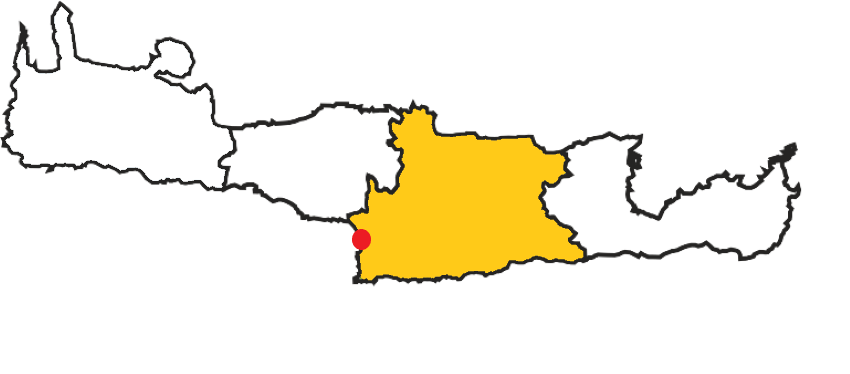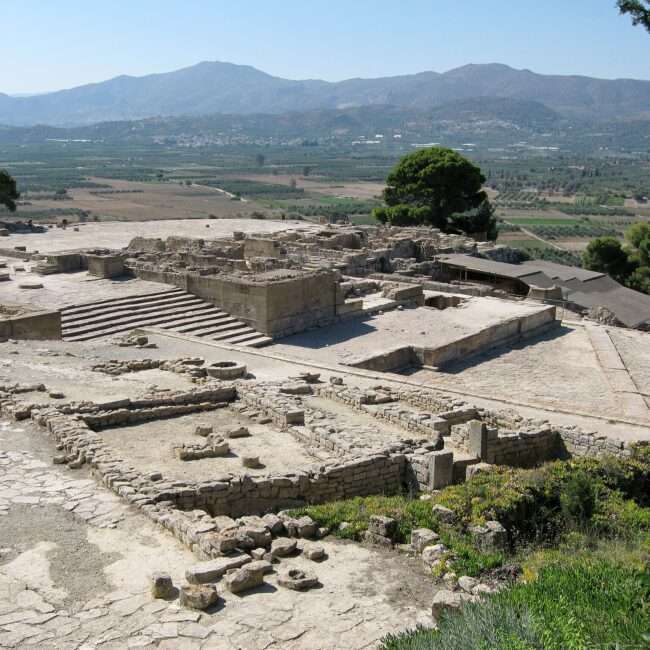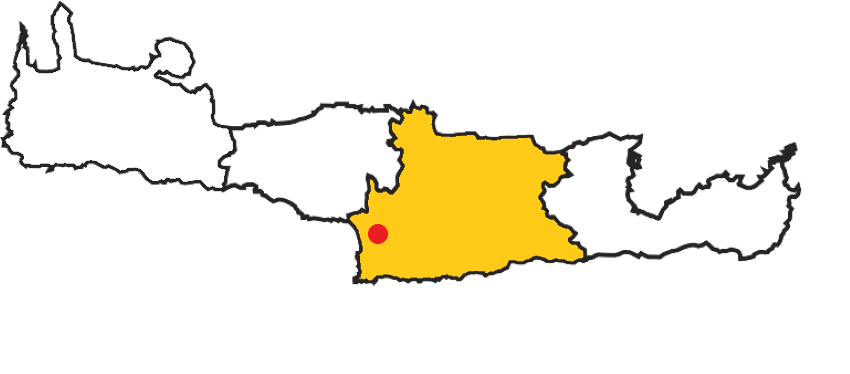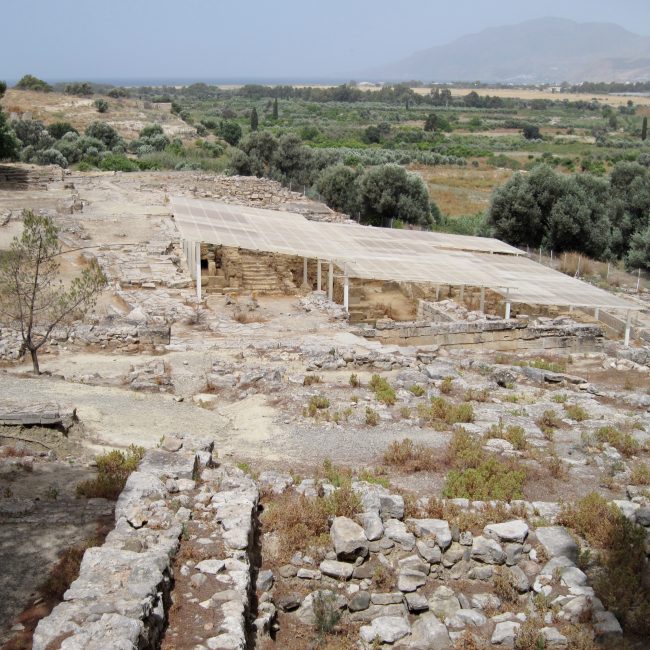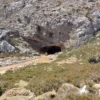Agiofarago Gorge
Agiofarago: Crete's Enchanting Gorge of Saints
The Agiofarago Gorge, in the district of Heraklion, is a spectacular natural wonder that draws visitors from all over the world. The gorge is a tiny canyon 3.5 kilometers long that is bordered by towering cliffs. It is a popular hiking, nature, and adventure destination that provides a one-of-a-kind and amazing experience.
The gorge of saints
Agiofarago Gorge is located south of Panagia Odigitria Monastery and was formed by the convergence of two streams.
The two streams merge near the chapel of Saint Kiriaki, and after a pretty easy walk, the united torrent forms the major Agiofarago valley, which ends on the spectacular Agiofarago beach.
Vertical cliffs with caves rise along the gorge route, although the course in the flat bank of the stream is extremely easy and smooth.
There is a climbing field just before reaching the shore, and it is normal to see several climbers.
The name Agiofarago means “Gorge of Saints“, and it is named after the hermits who established the most prominent hermitage in Central Crete after Saint Paul left the area.
According to folklore, three hundred hermits lived in complete seclusion from one another here.
They only convened once a year in the Cave Goumenospilios to count who had died the previous year.
Before reaching the cave Goumenospilios, one comes across the church of Saint Anthony (Agios Antonios), which became the heart of the area’s asceticism when the hermits began organizing a monastic society.
the journey
Agiofarago is accessible by a dirt road that begins at the historic Monastery of Odigitria near Sivas, to which the territory belongs. Continue right from the monastery, following the signs to Agiofarago, and drop into the gorge until you reach a dead end and a small parking space.
If you park your car under the trees, it may be damaged by goats climbing on the roof to eat the sensitive leaves from the trees.
The hike in the gorge from the parking lot to the sea takes about 25–35 minutes.
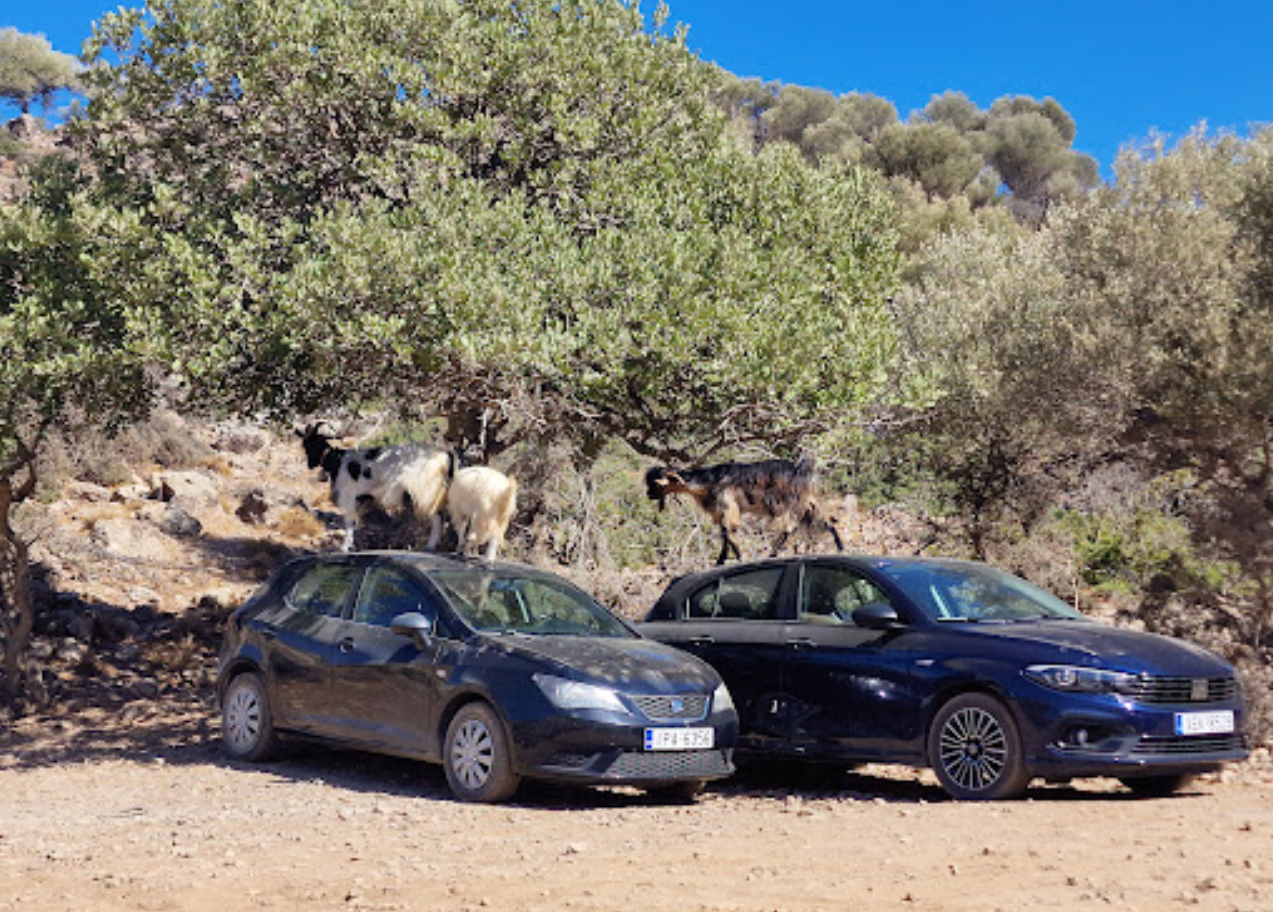
Visitors are rewarded with a spectacular landscape of towering cliffs, lush greenery, and sparkling rivers once inside the gorge. In certain spots, the narrow canyon walls soar up to 300 meters, producing a stunning and awe-inspiring landscape.
There are various historic caves and rock shelters that were utilized by the locals as houses and places of worship in ancient times. Visitors can explore the caves and learn about the area’s rich history and cultural heritage.
Despite the caves, there are also various geological formations along the path of the gorge. We recommend caution, as many of them are pretty steep.
ATTRACTIONS
Goumenospilios cave
Goumenospilios is a little cave found near the massive Saint Anthony Church. It has a little entrance but a large interior with a lighting hole in the roof. The cave is unadorned but historically significant.
Agiofarago has long been a location of asceticism, and it is now controlled by the Odigitra Monastery in Sivas. According to folklore, 300 hermits resided in Agiofarago and never spoke to one another until the day of the Resurrection. On that day, they all assembled in the cave and sat on the 300 stones that surrounded them. They then counted how many stones were unoccupied in order to estimate how many had died in the previous year.
There are building ruins and an old wall in the cave’s background, the purpose of which is unknown. These could be relics of an ancient temple or a structure that aided the daily lives of the monks who lived in the cave.
Vourvoulitis Pond
Vourvoulitis is a hidden sea-lake cave just above the east cliffs of Agiofarago Beach.
It is a sinkhole that connects to the open sea via underground channels. The water is brackish because fresh water flows from the pond’s bottom.
It is easy to approach Vourvoulitis. Climb for around 10 minutes from the west end of Agiofarago Beach (sneakers are necessary) until you reach the Vourvoulitis sinkhole.
Although it appears impossible at first, one can approach and swim in the lake, although it is quite risky due to the steep edges.
Vourvoulitis is one of Crete’s most stunning holes that leads to the sea. A few meters to the east of the village of Kali Limenes is a similar sinkhole known as Little Vourvoulitis.
One of the most beautiful and rewarding features of Agiofarago Gorge is the Agiofarago Beach, which is located at the end of the gorge. This secluded and pristine beach is accessible by foot or boat and is a popular destination for sunbathing, swimming, and snorkeling. The beach is surrounded by steep cliffs and crystal-clear waters, creating a stunning and unforgettable natural setting.
It is recommended to bring all the necessary things with you since the beach is not organized. On the beach, you may meet wild goats, so it is good to have your food in a safe place. Camping and nudity are prohibited.
THINGS TO SEE AND DO IN agiofarago
How to Get There
The beach of Agiofarago is located about 80 kilometers south of Heraklion, at the outlet of the Agiofarago Gorge. To get there, either cross the canyon on foot (approximately 25-50 minutes) or take a boat from various places like Kali Limenes, Matala, Kokkinos Pyrgos or Agia Galini. We strongly recommend the first choice, as the route within the gorge’s steep cliffs is stunning. Of course, if you are not sure, there are organized safaris (usually an all-day safari) with 4×4 cars that take you to see the wider area with stops. If you choose to go by your car, do not park it under any tree for shade because you don’t want to see it ruined by goats that get on the car roof to eat leaves from the tree.
Conclusion
In conclusion, the Agiofarago Gorge is a unique and unforgettable destination that offers visitors a chance to explore the natural beauty and rich cultural heritage of Crete. Its rugged terrain, towering cliffs, and crystal-clear waters create a stunning and awe-inspiring landscape, while its historic landmarks and cultural heritage offer a glimpse into the ancient history of the area. A visit to Agiofarago Gorge is a must-do for anyone visiting Crete and is sure to be a highlight of any trip to this beautiful island.
ADDITIONAL TIPS FOR AN ENJOYABLE VISIT TO Agiofarago gorge

Destinations near agiofarago
More options for nearby locations to plan your vacations better!


